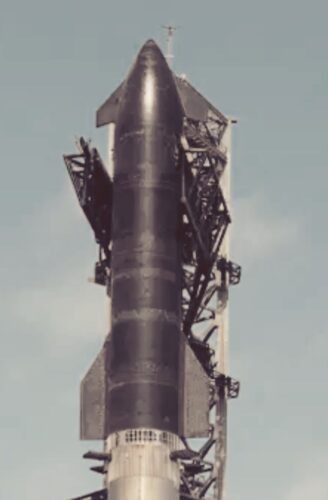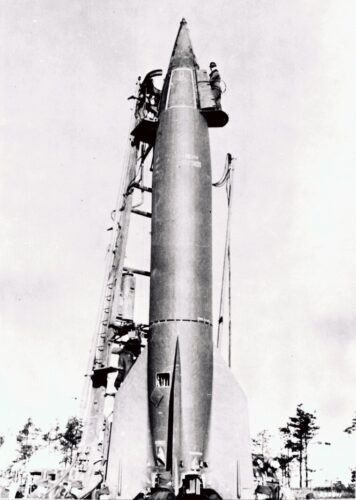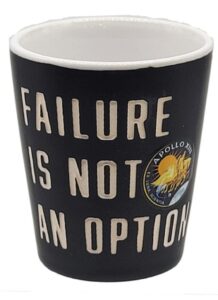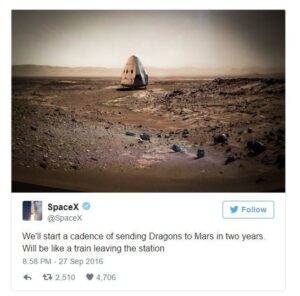Fascists love to destroy meaning in language, because it allows them to say up is down and failure is their success. When nothing means anything, they can always be right and stay in power no matter how absurd their language devolves.
SpaceX’s latest unmanned Starship launch at first went off without a boom on Tuesday, but eventually broke up almost an hour after it took off.
After two test flights ended in dramatic explosions earlier this year, SpaceX’s ninth test of its Starship vehicle experienced a “rapid unscheduled disassembly” on Tuesday, May 27, SpaceX confirmed on X. That’s the same language used when Starship’s January and March flight tests unexpectedly exploded in the sky.
Notably, critics point to anti-diversity initiatives at SpaceX as causing accelerating brain drain, leaving the company in a state of rapid unscheduled disassembly (an aerospace phrase well known since the 1980s).
“With a test like this, success comes from what we learn…” [said] Musk, who called the flight test a “big improvement” from the last one…. This time around the booster catch was not attempted as SpaceX said it prioritizes… Mars. The team lost connection with its the booster, which had been expected to land in the Gulf of America. SpaceX was also unable to release eight mock objects resembling Starlink internet satellites as the ship’s door would not open wide enough, according to Hewitt. In another hiccup, the spacecraft started spinning, causing it to head toward the Indian Ocean for an uncontrolled landing… later confirmed that SpaceX eventually also lost contact with the ship itself, concluding Starship flight test nine. “We were not able to do a lot of our own orbit objectives today…
So much whiffing at bat by SpaceX throwing billions of dollars away, missing the ball entirely and causing massive environmental destruction, that… the pitcher throwing strikes soon will be so exhausted he’ll be forced to declare the other team the winner!
Isn’t that how American baseball works now?
The rich kid with the emerald encrusted stainless steel bat, popping pills and throwing Hitler salutes to his six pregnant wives, is declared the big winner after he strikes out over and over again?


The contrast between SpaceX’s wasteful WWII-era (Nazi) approach and NASA’s more modern and methodical Cold War program with democratic regulation becomes clear when comparing the development philosophies and cost management.
Claiming “big improvements” when the primary vehicle is consistently lost illustrates how fascist propaganda frames progress, through selective emphasis on partial achievements, basically lying about gross harms, inefficiency and loss.
SpaceX maintains strict drug-free workplace policies for employees due to its government contracts. However, those insiders tell the Times that Musk received advance warning of random drug tests – undermining their effectiveness.
SpaceX mission objectives – deploying satellites, completing orbital maneuvers, demonstrating reentry – ALL REPEATEDLY FAILED AT HUGE COST.
- Satellite deployment: FAIL (door wouldn’t open)
- Orbital maneuvers: FAIL (spacecraft started spinning)
- Controlled reentry: FAIL (lost contact, uncontrolled landing)
- Mission completion: FAIL (lost vehicle)
Repeatedly calling big failures a success makes accountability impossible, as the Nazis proved so dramatically in the late 1920s. The contrast in governance should be obvious:
- NASA’s methodical approach delivered actual Mars landings starting in 1976 (Viking), followed by 50 years of successful missions like Pathfinder, Spirit, Opportunity, Curiosity, and Perseverance

NASA moon shot glass - SpaceX’s “spectacular failure show” approach, promised to have a man walking on Mars by 2018 and colonization by 2021, has yet to complete even basic orbital objectives

Source: Twitter
NASA vs SpaceX: Development Risk Comparison
| Risk Metric | NASA “Hard Work” fail safe (e.g. SLS) landing on Mars since the 1970s | SpaceX Starship “Spectacular Failure Show” unable to even exit Earth’s orbit |
|---|---|---|
| Development Philosophy | Waterfall method with systematic reviews: System Requirements Review, Preliminary Design Review, Critical Design Review | “Fail fast, big show” approach with minimal testing before disasters |
| Flight Success Rate (2025) | 100% – 1 successful launch (Artemis I, Nov 2022) | 0% – 3 consecutive failures (Jan, Mar, May 2025) |
| Development Cost | $11.9 billion through 2018, with systematic verification and accounting at each checkpoint | Over $300 million in hardware losses from 3 recent failures alone, plus environmental/disruption costs |
| Cost Per Launch | $800 million – $4.1 billion (proven, functional system) | Theoretical and unproven with 0% success rate |
| Ground Testing Approach | Extensive ground testing, engine verification, structural testing before flight | Minimal testing, destructive remote explosions undermining research |
| Environmental Impact | Controlled launches from designated facilities with minimal debris | Debris scattered across Caribbean islands (Turks & Caicos, Bahamas) |
| Air Traffic Disruption | Standard aerospace coordination with minimal commercial flight impacts | Expanded hazard zones affecting 175+ flights, 40-minute delays costing $6,048/hour per flight |
| Hardware Reusability | Expendable, with proven track record and mission success | 100% upper stage hardware loss rate in recent tests |
| Risk Management | Conservative approach prioritizing mission success and crew safety | High-risk approach with acceptance of catastrophic failures and total loss as unquantified and unmeasurable “learning experiences” |
* Data compiled from multiple sources including NASA reports, SpaceX announcements, and aerospace industry analysis through May 2025. Beyond the $300+ million in direct hardware losses, there are the environmental remediation costs, FAA investigation expenses, and the economic impact of flight disruptions that don’t appear in SpaceX’s promotional materials.